#how to export files from salesforce
Explore tagged Tumblr posts
Text
Unlocking Sales Leads: How LinkedIn Data Extraction Tool Works with Sales Navigator Scraper – Powered by Data Reclaimer
In the digital era, sales success is no longer about cold calls and guesswork — it’s about smart data, targeted outreach, and precision prospecting. That’s where LinkedIn Sales Navigator and modern scraping tools like Sales Navigator Scraper come into play. Designed to enhance B2B lead generation, these tools extract actionable business intelligence directly from the world’s largest professional network. But how does a LinkedIn data extraction tool work? And what makes tools like those offered by Data Reclaimer a game-changer for sales professionals?
Let’s explore.
What Is LinkedIn Sales Navigator?
LinkedIn Sales Navigator is a premium tool provided by LinkedIn, tailored for sales teams and B2B marketers. It offers advanced search filters, lead recommendations, CRM integrations, and insights into buyer intent — all aimed at helping users connect with the right decision-makers.
However, manually collecting and organizing data from Sales Navigator can be time-consuming and inefficient. This is where data extraction tools or Sales Navigator scrapers come in, automating the process of pulling valuable data from LinkedIn profiles, company pages, and lead lists.
How LinkedIn Data Extraction Tools Work
When we ask "How LinkedIn Data Extraction Tool Works?", the answer lies in a combination of intelligent web scraping, automation frameworks, and ethical data handling practices.
1. User Authentication & Input
First, the user logs into their LinkedIn account — typically through Sales Navigator — and defines search parameters such as industry, location, job title, company size, or keywords.
2. Automated Crawling
Once parameters are set, the tool initiates an automated crawl through the search results. Using browser automation (often through headless browsers like Puppeteer or Selenium), it navigates LinkedIn just like a human would — scrolling, clicking, and viewing profiles.
3. Data Extraction
The scraper extracts public or semi-public information such as:
Full Name
Job Title
Company Name
Location
LinkedIn Profile URL
Contact info (if available)
Industry and seniority level
Connection level (1st, 2nd, 3rd)
4. Data Structuring
After extraction, the data is parsed and organized into a clean format — usually a CSV or JSON file — for easy import into CRMs like HubSpot, Salesforce, or marketing automation platforms.
5. Export and Integration
Finally, users can download the dataset or directly sync it to their sales stack, ready for outreach, segmentation, or analysis.
Why Use Sales Navigator Scraper by Data Reclaimer?
Data Reclaimer offers a cutting-edge Sales Navigator Scraper designed to be user-friendly, accurate, and compliant with best practices. Here’s why it stands out:
✅ High Accuracy & Speed
Unlike basic scrapers that miss key data points or get blocked, Data Reclaimer’s tool uses advanced logic to mimic human interaction, ensuring minimal detection and high-quality results.
✅ Custom Filters & Targeting
Pull data based on highly specific LinkedIn Sales Navigator filters such as seniority, department, activity, and more — allowing for razor-sharp targeting.
✅ Real-Time Data Updates
Stay ahead of outdated contact lists. The tool extracts real-time profile data, ensuring your leads are current and relevant.
✅ GDPR-Aware Extraction
Data Reclaimer ensures its scraping tools align with ethical and legal standards, including GDPR compliance by focusing only on publicly accessible data.
✅ Scalable for Agencies and Teams
Whether you're a solo marketer or part of a large agency, the Sales Navigator Scraper supports bulk extraction for large-scale lead generation.
Use Cases for LinkedIn Data Extraction Tools
From recruiters and B2B marketers to SDRs and startup founders, many professionals benefit from LinkedIn data scraping:
Lead Generation: Build targeted B2B lead lists quickly without manual searching.
Competitor Research: Analyze hiring trends, employee roles, or client networks.
Market Segmentation: Understand demographics within an industry or region.
Recruitment: Identify potential candidates based on roles and skills.
Corporate Intelligence: Map organizational charts and influencer hierarchies.
Ethical Considerations & Best Practices
Using a LinkedIn data extraction tool should always follow responsible use practices. Data Reclaimer advises:
Avoid scraping excessive data that may violate LinkedIn's terms of use.
Only extract information that is publicly available.
Use scraped data for B2B networking and not for spam or harassment.
Clearly disclose how data will be used when reaching out to prospects.
Respect for data privacy not only ensures compliance but also builds trust with your leads.
Tips for Maximizing Sales Navigator Scraper Efficiency
Refine Your Filters: The more specific your Sales Navigator search, the cleaner and more targeted your data output.
Use Proxy Rotation: To avoid IP blocks, consider rotating proxies or using a tool that automates this for you.
Limit Daily Requests: Over-scraping can trigger LinkedIn’s anti-bot systems. Stick to daily limits suggested by your scraper provider.
Enrich and Verify Data: Use email verification tools or enrichment platforms to validate and enhance extracted data.
Integrate with Your CRM: Automate lead nurturing by syncing extracted leads into your CRM system for immediate follow-up.
Conclusion: Sales Prospecting at Scale, the Smart Way
In today’s hyper-competitive B2B landscape, the ability to access high-quality, targeted leads can set you apart from the competition. Understanding how LinkedIn data extraction tools work, especially through powerful solutions like the Sales Navigator Scraper by Data Reclaimer, empowers sales teams to focus on closing deals instead of chasing contact information.
From startups to enterprise sales departments and B2B agencies, tools like these are not just about automation — they’re about intelligence, efficiency, and scalability.
1 note
·
View note
Text
Batch Address Validation Tool and Bulk Address Verification Software
When businesses manage thousands—or millions—of addresses, validating each one manually is impractical. That’s where batch address validation tools and bulk address verification software come into play. These solutions streamline address cleansing by processing large datasets efficiently and accurately.

What Is Batch Address Validation?
Batch address validation refers to the automated process of validating multiple addresses in a single operation. It typically involves uploading a file (CSV, Excel, or database) containing addresses, which the software then checks, corrects, formats, and appends with geolocation or delivery metadata.
Who Needs Bulk Address Verification?
Any organization managing high volumes of contact data can benefit, including:
Ecommerce retailers shipping to customers worldwide.
Financial institutions verifying client data.
Healthcare providers maintaining accurate patient records.
Government agencies validating census or mailing records.
Marketing agencies cleaning up lists for campaigns.
Key Benefits of Bulk Address Verification Software
1. Improved Deliverability
Clean data ensures your packages, documents, and marketing mailers reach the right person at the right location.
2. Cost Efficiency
Avoiding undeliverable mail means reduced waste in printing, postage, and customer service follow-up.
3. Database Accuracy
Maintaining accurate addresses in your CRM, ERP, or mailing list helps improve segmentation and customer engagement.
4. Time Savings
What would take weeks manually can now be done in minutes or hours with bulk processing tools.
5. Regulatory Compliance
Meet legal and industry data standards more easily with clean, validated address data.
Features to Expect from a Batch Address Validation Tool
When evaluating providers, check for the following capabilities:
Large File Upload Support: Ability to handle millions of records.
Address Standardization: Correcting misspellings, filling in missing components, and formatting according to regional norms.
Geocoding Integration: Assigning latitude and longitude to each validated address.
Duplicate Detection & Merging: Identifying and consolidating redundant entries.
Reporting and Audit Trails: For compliance and quality assurance.
Popular Batch Address Verification Tools
Here are leading tools in 2025:
1. Melissa Global Address Verification
Features: Supports batch and real-time validation, international formatting, and geocoding.
Integration: Works with Excel, SQL Server, and Salesforce.
2. Loqate Bulk Cleanse
Strengths: Excel-friendly UI, supports uploads via drag-and-drop, and instant insights.
Ideal For: Businesses looking to clean customer databases or mailing lists quickly.
3. Smarty Bulk Address Validation
Highlights: Fast processing, intuitive dashboard, and competitive pricing.
Free Tier: Great for small businesses or pilot projects.
4. Experian Bulk Address Verification
Capabilities: Cleans large datasets with regional postal expertise.
Notable Use Case: Utility companies and financial services.
5. Data Ladder’s DataMatch Enterprise
Advanced Matching: Beyond address validation, it detects data anomalies and fuzzy matches.
Use Case: Enterprise-grade data cleansing for mergers or CRM migrations.
How to Use Bulk Address Verification Software
Using batch tools is typically simple and follows this flow:
Upload Your File: Use CSV, Excel, or database export.
Map Fields: Match your columns with the tool’s required address fields.
Validate & Clean: The software standardizes, verifies, and corrects addresses.
Download Results: Export a clean file with enriched metadata (ZIP+4, geocode, etc.)
Import Back: Upload your clean list into your CRM or ERP system.
Integration Options for Bulk Address Validation
Many vendors offer APIs or direct plugins for:
Salesforce
Microsoft Dynamics
HubSpot
Oracle and SAP
Google Sheets
MySQL / PostgreSQL / SQL Server
Whether you're cleaning one-time datasets or automating ongoing data ingestion, integration capabilities matter.
SEO Use Cases: Why Batch Address Tools Help Digital Businesses
In the context of SEO and digital marketing, bulk address validation plays a key role:
Improved Local SEO Accuracy: Accurate NAP (Name, Address, Phone) data ensures consistent local listings and better visibility.
Better Audience Segmentation: Clean data supports targeted, geo-focused marketing.
Lower Email Bounce Rates: Often tied to postal address quality in cross-channel databases.
Final Thoughts
Batch address validation tools and bulk verification software are essential for cleaning and maintaining large datasets. These platforms save time, cut costs, and improve delivery accuracy—making them indispensable for logistics, ecommerce, and CRM management.
Key Takeaways
Use international address validation to expand globally without delivery errors.
Choose batch tools to clean large datasets in one go.
Prioritize features like postal certification, coverage, geocoding, and compliance.
Integrate with your business tools for automated, real-time validation.
Whether you're validating a single international address or millions in a database, the right tools empower your operations and increase your brand's reliability across borders.
youtube
SITES WE SUPPORT
Validate Address With API – Wix
0 notes
Text
INTEGRATION SOFTWARE
In today’s fast-paced business environment, integrating accounting software like Tally with other business tools is essential for efficiency and accuracy. If you’re looking for the best Tally integration software to streamline operations and boost productivity, you’ve come to the right place.
At Bizmate, we understand the importance of seamless integrations to enhance workflow automation, reduce manual errors, and improve financial reporting. In this article, we’ll explore the top Tally integration software solutions that can help your business grow while optimizing accounting processes.
Why Do You Need Tally Integration Software?
Tally is a powerful accounting tool, but integrating it with other business applications can unlock its full potential. Here’s why Tally integration is crucial:
✅ Automates Data Entry – Eliminates manual data transfer between systems. ✅ Reduces Errors – Minimizes human mistakes in financial records. ✅ Improves Efficiency – Syncs sales, inventory, payroll, and CRM data in real time. ✅ Enhances Reporting – Generates consolidated reports for better decision-making.
Now, let’s dive into the best Tally integration software available today.
Top 5 Tally Integration Software for Businesses
1. Biz Analyst
Best for: Small & medium businesses (SMBs) Key Features:
Syncs Tally data with mobile apps for on-the-go access.
Real-time sales and inventory tracking.
Financial reporting and analytics.
Why Choose Biz Analyst? Biz Analyst is a user-friendly app that helps business owners access Tally data remotely, making it ideal for sales teams and managers who need instant financial insights.
2. TallyPrime with E-Invoicing Integration
Best for: GST-compliant businesses in India Key Features:
Direct e-invoice generation from Tally.
Auto-sync with the GST portal.
Seamless ERP and CRM integration.
Why Choose TallyPrime? If your business deals with GST filing, TallyPrime’s built-in e-invoicing feature ensures compliance while reducing manual work.
3. Zapier for Tally
Best for: Automating workflows across apps Key Features:
Connects Tally with 1,000+ apps (e.g., Shopify, QuickBooks, Gmail).
Triggers automated actions (e.g., sending invoices via email).
No coding required.
Why Choose Zapier? Zapier is perfect for businesses using multiple tools and needing automated workflows without complex setups.
4. Tally.ERP 9 with Salesforce Integration
Best for: CRM and accounting synchronization Key Features:
Syncs customer data between Tally and Salesforce.
Automates invoice generation from sales orders.
Improves sales and accounting alignment.
Why Choose Salesforce Integration? If your business relies on CRM for sales, integrating Salesforce with Tally ensures seamless data flow between departments.
5. QuickBooks Tally Connector
Best for: Businesses using both Tally & QuickBooks Key Features:
Imports/export data between Tally and QuickBooks.
Maintains consistency across accounting platforms.
Reduces duplicate entries.
Why Choose QuickBooks Tally Connector? If you operate globally and use QuickBooks for international accounting, this integration keeps your books aligned.
How to Choose the Right Tally Integration Software?
Before selecting a Tally integration tool, consider:
🔹 Business Needs – Do you need CRM, e-commerce, or inventory sync? 🔹 Budget – Some tools offer free plans, while others require subscriptions. 🔹 Ease of Use – Look for no-code solutions if you lack technical expertise. 🔹 Scalability – Will the software grow with your business?
Conclusion
Integrating Tally with the right software can save time, reduce errors, and improve business efficiency. Whether you need mobile access (Biz Analyst), automation (Zapier), or CRM sync (Salesforce), there’s a perfect Tally integration tool for your business.
At Bizmate, we help businesses optimize their accounting processes with smart software solutions. Need help choosing the best Tally integration for your company? Contact us today!
By leveraging these tools, you can enhance productivity, streamline operations, and grow your business faster.
0 notes
Text
How to Build Custom Apps on Salesforce Using Lightning Web Components (LWC)

Salesforce is a leading platform in cloud-based customer relationship management (CRM), and one of its standout features is the ability to create custom apps tailored to an organization's specific needs. With the introduction of Lightning Web Components (LWC), Salesforce developers can now build faster, more efficient, and more powerful custom applications that integrate seamlessly with the Salesforce ecosystem.
In this blog, we’ll walk you through the process of building custom apps on Salesforce using Lightning Web Components.
What Are Lightning Web Components (LWC)?
Before diving into the development process, let’s briefly explain what Lightning Web Components are. LWC is a modern, standards-based JavaScript framework built on web components, enabling developers to build reusable and customizable components for Salesforce apps. It is faster and more efficient than its predecessor, Aura components, because it is built on native browser features and embraces modern web standards.
Why Use LWC for Custom Apps on Salesforce?
Performance: LWC is optimized for speed. It delivers a faster runtime and improved loading times compared to Aura components.
Reusability: Components can be reused across different apps, enhancing consistency and productivity.
Standardization: Since LWC is built on web standards, it makes use of popular technologies like JavaScript, HTML, and CSS, which makes it easier for developers to work with.
Ease of Integration: LWC components integrate effortlessly with Salesforce's powerful features such as Apex, Visualforce, and Lightning App Builder.
Steps to Build Custom Apps Using LWC
1. Set Up Your Salesforce Developer Environment
Before you begin building, you’ll need a Salesforce Developer Edition or a Salesforce org where you can develop and test your apps.
Create a Salesforce Developer Edition Account: You can sign up for a free Developer Edition from Salesforce’s website.
Install Salesforce CLI: The Salesforce CLI (Command Line Interface) helps you to interact with your Salesforce org and retrieve metadata, deploy changes, and execute tests.
Set Up VS Code with Salesforce Extensions: Visual Studio Code is the most commonly used editor for LWC development, and Salesforce provides extensions for VS Code that offer helpful features like code completion and syntax highlighting.
2. Create a New Lightning Web Component
Once your development environment is set up, you’re ready to create your first LWC component.
Open VS Code and create a new Salesforce project using the SFDX: Create Project command.
Create a Lightning Web Component by using the SFDX: Create Lightning Web Component command and entering the name of your component.
Your component’s files will be generated. This includes an HTML file (for markup), a JavaScript file (for logic), and a CSS file (for styling).
Here’s an example of a simple LWC component:
HTML (template):
html
CopyEdit
<template> <lightning-card title="Welcome to LWC!" icon-name="custom:custom63"> <div class="slds-p-around_medium"> <p>Hello, welcome to building custom apps using Lightning Web Components!</p> </div> </lightning-card> </template>
JavaScript (logic):
javascript
CopyEdit
import { LightningElement } from 'lwc'; export default class WelcomeMessage extends LightningElement {}
3. Customize Your LWC Components
Now that your basic LWC component is in place, you can start customizing it. Some common customizations include:
Adding Dynamic Data: You can use Salesforce data by querying records through Apex controllers or the Lightning Data Service.
Handling Events: LWC allows you to define custom events or handle standard events like button clicks, form submissions, etc.
Styling: You can use Salesforce’s Lightning Design System (SLDS) or custom CSS to style your components according to your branding.
Example of adding dynamic data (like displaying a user’s name):
javascript
CopyEdit
import { LightningElement, wire } from 'lwc'; import getUserName from '@salesforce/apex/UserController.getUserName'; export default class DisplayUserName extends LightningElement { userName; @wire(getUserName) wiredUserName({ error, data }) { if (data) { this.userName = data; } else if (error) { console.error(error); } } }
4. Deploy and Test Your Component
Once you’ve created your components, it’s time to deploy them to your Salesforce org and test them.
Deploy to Salesforce Org: You can deploy your component using the Salesforce CLI by running SFDX: Deploy Source to Org from VS Code.
Testing: You can add your LWC component to a Lightning page using the Lightning App Builder and test its functionality directly in the Salesforce UI.
5. Create a Custom App with Your Components
Once your custom components are developed and tested, you can integrate them into a full custom app.
Use the Lightning App Builder: The Lightning App Builder allows you to create custom apps by dragging and dropping your LWC components onto a page.
Set Permissions and Sharing: Ensure that the right users have access to the custom app by configuring user permissions, profiles, and sharing settings.
6. Iterate and Improve
Once your app is live, collect user feedback and iteratively improve the app. Salesforce offers various tools like debugging, performance monitoring, and error tracking to help you maintain and enhance your app.
Best Practices for Building Custom Apps with LWC
Component Modularity: Break down your app into smaller, reusable components to improve maintainability.
Optimize for Performance: Avoid heavy processing on the client-side and use server-side Apex logic where appropriate.
Use Lightning Data Service: It simplifies data management by handling CRUD operations without the need for Apex code.
Follow Salesforce’s Security Guidelines: Ensure that your app follows Salesforce’s security best practices, like field-level security and sharing rules.
Conclusion
Building custom apps on Salesforce using Lightning Web Components is an effective way to harness the full power of the Salesforce platform. With LWC, developers can create high-performance, dynamic, and responsive apps that integrate seamlessly with Salesforce’s cloud services. By following best practices and leveraging Salesforce’s tools, you can build applications that drive business efficiency and enhance user experience.
If you're interested in building custom Salesforce applications, now is the perfect time to dive into Lightning Web Components and start bringing your ideas to life!
0 notes
Text
Salesforce - How to download bulk files and attachments in one Go?
youtube
Learn how to download bulk files and attachments from Salesforce efficiently with Sastorm Software’s expert guide. Streamline your data management process and save time by downloading multiple files at once. Perfect for Salesforce admins and users looking to optimize their workflow, this step-by-step tutorial ensures you can easily manage and export attachments without hassle. Discover how to enhance your Salesforce experience today!
0 notes
Text
Migrating to Salesforce: 8 Expert Tips for Better Transition
Though migrating to Salesforce for customer relationship management may seem a herculean task, it is not so in reality. Migrating to Salesforce requires meticulous planning and prompt execution. Salesforce offers solutions that help a lot with streamlining workflows, gaining insights into customer data for analyzing trends, and automating cumbersome, tedious, and mundane tasks.
Table of Contents
Data Detox and Decluttering before migrating to Salesforce:
Assemble Your A-Team before migrating to Salesforce:
Data Extraction:
Data Transformation:
Data Validation:
Customization:
Populate templates:
Addressing Management Matters before migrating to Salesforce:
https://blog.almamate.in/wp-content/uploads/2024/07/salesforce-migration-1.jpg
Before clicking on that ‘migrate’ button, it is always advisable to map out one’s strategy. Following are a few key factors to consider before taking the plunge and migrating to Salesforce:
Data Detox and Decluttering before migrating to Salesforce:
It is a good practice to figure out how redundant and duplicate data must be removed before migrating to Salesforce. Only important data that is worth retaining should remain in the database which is to be migrated using Salesforce. Identify the critical customer, lead, and opportunity details of your organization’s database– this is the essence of successfully migrating to Salesforce. Think of it as cleaning out your attic. Formatting inconsistencies are also to be rooted out. Backing up data before starting the detox process is a good practice and is of immense importance. Backed-up data can be reinstated if something goes wrong while migrating to Salesforce.
Assemble Your A-Team before migrating to Salesforce:
Recruit and put together a team of star performers from the sales, IT, and data management verticals of your organization. Their combined expertise will ensure a smooth installation of (and transition to) Salesforce. Equip your teams with the knowledge they need to leverage the utility of Salesforce. Invest in training programs and resources. This is crucial for user buy-in.
Data Extraction:
Tools like Salesforce’s Data Loader will help you extract the necessary & relevant data from your computer/server/cloud. Classify and categorize the data you want to migrate. Choose the Objects that are to be migrated. Decide whether to migrate only the Contact information from each Account or to only migrate the Account information from a particular division.
Data Transformation:
Not all data will fit perfectly into Salesforce’s structure. The key to smooth sailing in the Salesforce ecosystem is meticulous mapping, formatting, and cleaning up of your existing data as and when decisions to transform data are made.
Data Validation:
While validating the migrated data, it is a must to detect flaws, inconsistencies, and discrepancies before problems in the reports and dashboards are created. Create custom reports to validate record counts and provide an overall snapshot of migration. Then, spot-check the data. This involves doing pilot testing by migrating small data sets before a full-scale migration. Review exception reports to see which data was not migrated.
Customization:
Tailor Salesforce to fit your team’s unique needs and workflows. This will make the platform feel familiar and more comfortable to work with. Create templates for the data. Create an Excel template for each Object using data export from Data Loader (use the export file as your template). Since Objects have mandatory relationships that dictate the order of data migration, identify the required fields for each Object. Always migrate Users first, then Accounts, followed by migration of Opportunities.
Populate templates:
Review your data before populating it in the template. Load one record, check the results, and then load all the remaining records. Prepare the destination org. Consider creating custom fields to store any legacy ID information. You can also assign the custom field the “External ID” attribute so it may be indexed. This will help maintain relationships and help you build custom reports for data validation. Create custom fields to store data contained in non-standard fields in the old organization. Consider this: if the old organization (source from where data is to be migrated) stored ‘Home Phone’ for your ‘Users’, consider creating that same custom field in the new Organization (destination where data is to be transferred) too.
Addressing Management Matters before migrating to Salesforce:
A successful migration is more than just about using the appropriate technology for migration. Prepare your team for the switch and address any anxieties they might have, so the team members may not face any issues while acclimatizing to the newly formatted/organized data structures. Remember, changes made to a system that the employees have been using for a long time can be petrifying for them, so open communication is key to preparing your team for the usage of the ever-evolving Salesforce features.
By carefully planning early, tackling the technical aspects with precision, and prioritizing user adoption, one can ensure a smooth data transition and unlock the full potential of Salesforce, a powerful CRM platform. Salesforce offers a plethora of migration resources and has many certified partners to assist clients with data migration. Embracing the power of Salesforce can significantly elevate your business operations, driving growth and fostering innovation.
https://www.youtube.com/embed/dNqipJxEigo?feature=oembedEnroll in our job-oriented Salesforce Training Programs to improve your career prospects!
Ready to make the most out of your Salesforce migration journey? AlmaMate, a premier Salesforce training center in Noida, is here to help you every step of the way. Our Salesforce certification courses, including Salesforce Developer Training and Salesforce Admin Training, are designed to equip your teams with the skills they need for a seamless transition. We offer the best Salesforce Training in Noida, and Salesforce Online Training in Delhi NCR, ensuring that you receive top-notch education no matter where you are. Empower your team with AlmaMate’s expert guidance and unlock the full potential of Salesforce! Contact us today to get started! Visit our website!
Disclaimer**: The images placed on this web page have been sourced from pexels.com.
0 notes
Text
Enabling CSV data uploads via a Salesforce Screen Flow
This is a tutorial for how to build a Salesforce Screen Flow that leverages this CSV to records lightning web component to facilitate importing data from another system via an export-import process.
My colleague Molly Mangan developed the plan for deploying this to handle nonprofit organization CRM import operations, and she delegated a client buildout to me. I’ve built a few iterations since.
I prefer utilizing a custom object as the import target for this Flow. You can choose to upload data to any standard or custom object, but an important caveat with the upload LWC component is that the column headers in the uploaded CSV file have to match the API names of corresponding fields on the object. Using a custom object enables creating field names that exactly match what comes out of the upstream system. My goal is to enable a user process that requires zero edits, just simply download a file from one system and upload it to another.
The logic can be as sophisticated as you need. The following is a relatively simple example built to transfer data from Memberpress to Salesforce. It enables users to upload a list that the Flow then parses to find or create matching contacts.
Flow walkthrough
To build this Flow, you have to first install the UnofficialSF package and build your custom object.
The Welcome screen greets users with a simple interface inviting them to upload a file or view instructions.

Toggling on the instructions exposes a text block with a screenshot that illustrates where to click in Memberpress to download the member file.
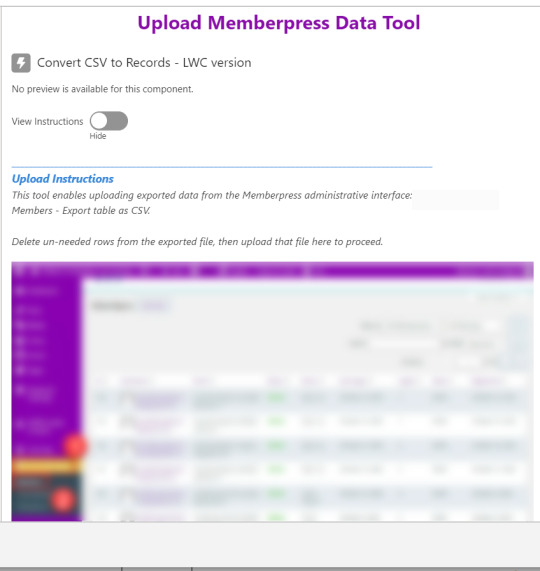
Note that the LWC component’s Auto Navigate Next option utilizes a Constant called Var_True, which is set to the Boolean value True. It’s a known issue that just typing in “True” doesn’t work here. With this setting enabled, a user is automatically advanced to the next screen upon uploading their file.
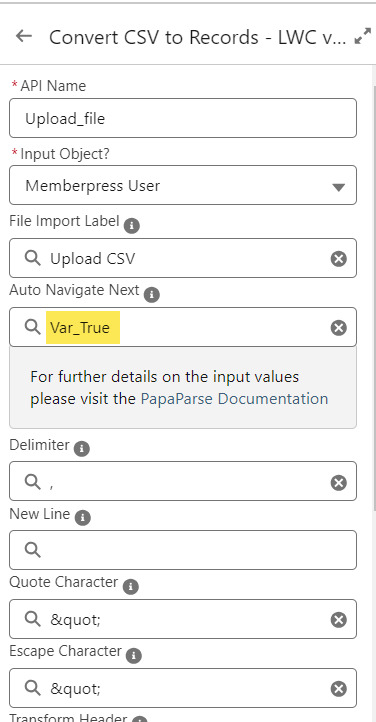
On the screen following the file upload, a Data Table component shows a preview of up to 1,500 records from the uploaded CSV file. After the user confirms that the data looks right, they click Next to continue.
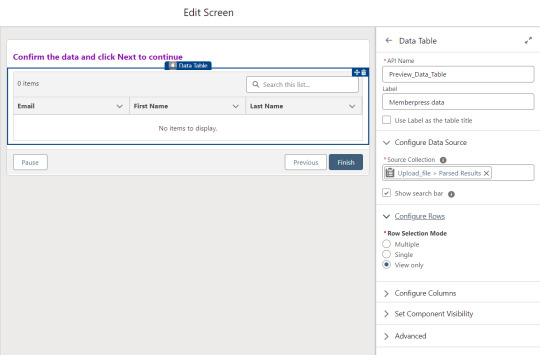
Before entering the first loop, there’s an Assignment step to set the CountRows variable.

Here’s how the Flow looks so far..

With the CSV data now uploaded and confirmed, it’s time to start looping through the rows.
Because I’ve learned that a CSV file can sometimes unintentionally include some problematic blank rows, the first step after starting the loop is to check for a blank value in a required field. If username is null then the row is blank and it skips to the next row.

The next step is another decision which implements a neat trick that Molly devised. Each of our CSV rows will need to query the database and might need to write to the database, but the SOQL 100 governor limit seriously constrains how many can be processed at one time. Adding a pause to the Flow by displaying another screen to the user causes the transaction in progress to get committed and governor limits are reset. There’s a downside that your user will need to click Next to continue every 20 or 50 or so rows. It’s better than needing to instruct them to limit their upload size to no more than that number.

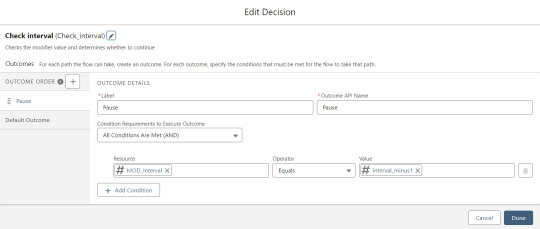
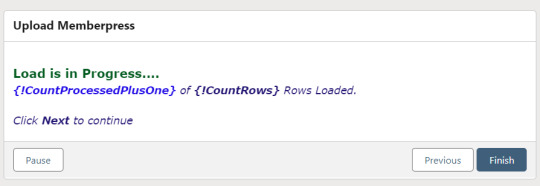
With those first two checks done, the Flow queries the Memberpress object looking for a matching User ID. If a match is found, the record has been uploaded before. The only possible change we’re worried about for existing records is the Memberships field, so that field gets updated on the record in the database. The Count_UsersFound variable is also incremented.

On the other side of the decision, if no Memberpress User record match is found then we go down the path of creating a new record, which starts with determining if there’s an existing Contact. A simple match on email address is queried, and Contact duplicate detection rules have been set to only Report (not Alert). If Alert is enabled and a duplicate matching rule gets triggered, then the Screen Flow will hit an error and stop.

If an existing Contact is found, then that Contact ID is written to the Related Contact field on the Memberpress User record and the Count_ContactsFound variable is incremented. If no Contact is found, then the Contact_Individual record variable is used to stage a new Contact record and the Count_ContactsNotFound variable is incremented.

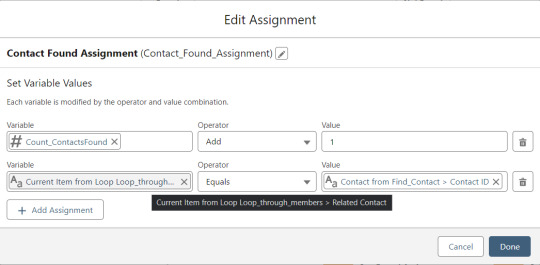

Contact_Individual is then added to the Contact_Collection record collection variable, the current Memberpress User record in the loop is added to the User_Collection record collection variable, and the Count_Processed variable is incremented.
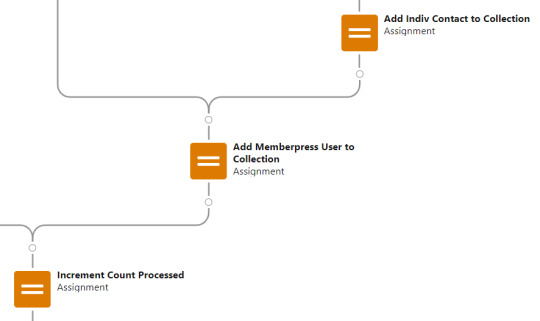


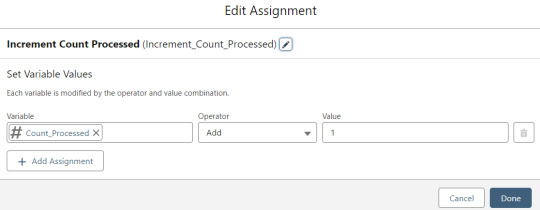
After the last uploaded row in the loop finishes, then the Flow is closed out by writing Contact_Collection and User_Collection to the database. Queueing up individuals into collections in this manner causes Salesforce to bulkify the write operations which helps avoid hitting governor limits. When the Flow is done, a success screen with some statistics is displayed.
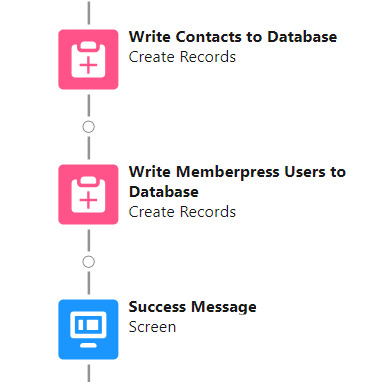

The entire Flow looks like this:
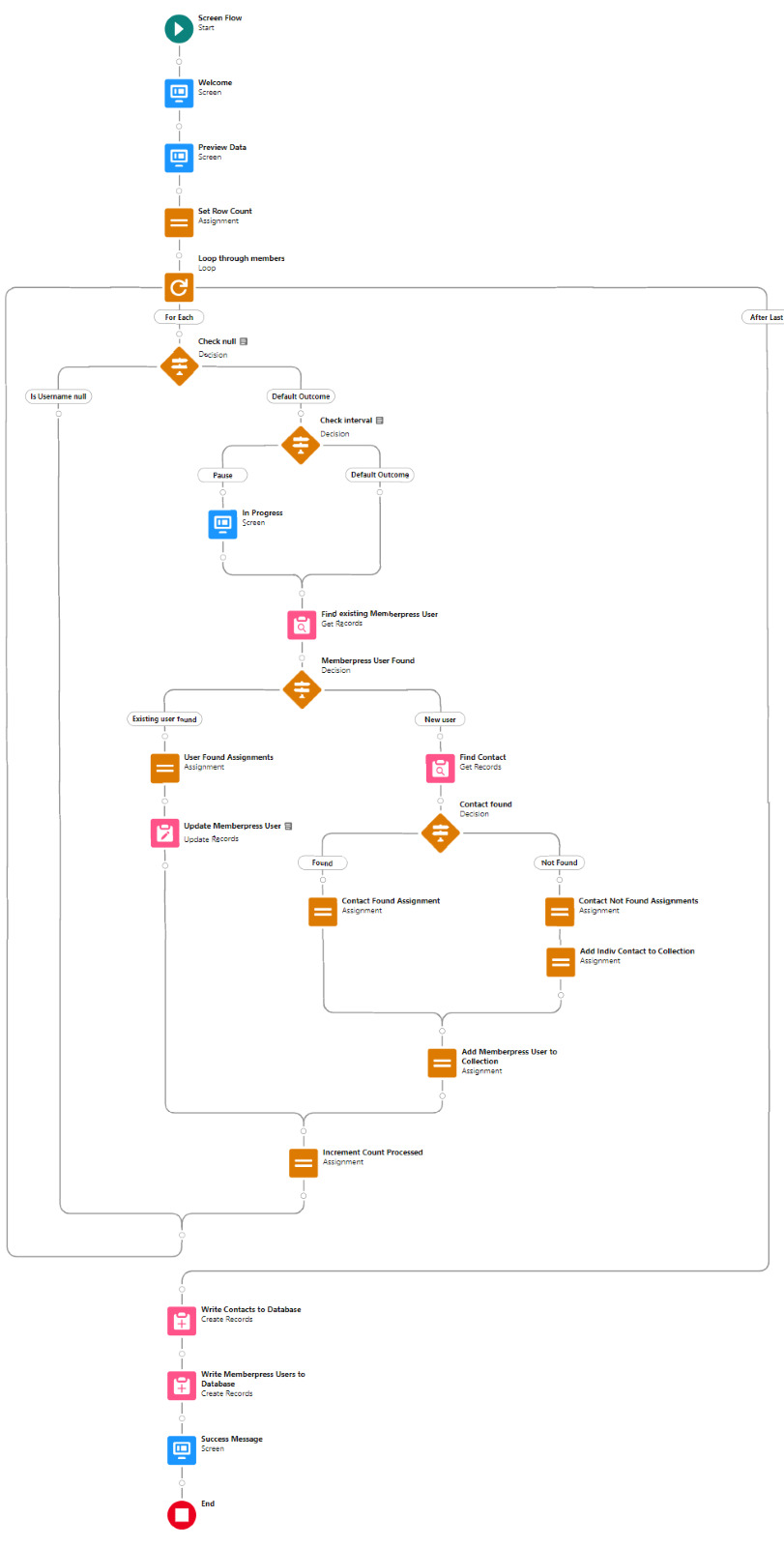
Flow variables
Interval_value determines the number of rows to process before pausing and prompting the user to click next to continue.
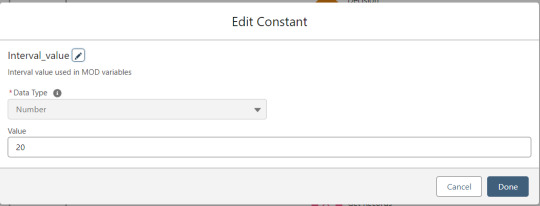
Interval_minus1 is Interval_value minus one.
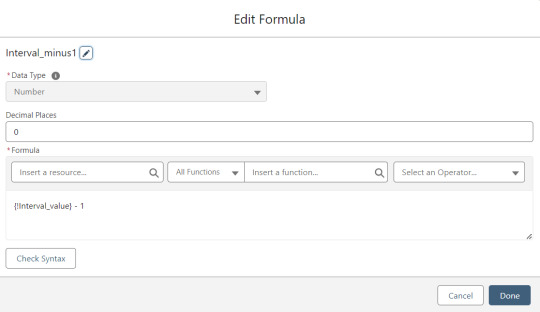
MOD_Interval is the MOD function applied to Count_Processed and Interval_value.

The Count_Processed variable is set to start at -1.

Supporting Flows
Sometimes one Flow just isn’t enough. In this case there are three additional record triggered Flows configured on the Memberpress User object to supplement Screen Flow data import operations.
One triggers on new Memberpress User records only when the Related Contact field is blank. A limitation of the way the Screen Flow batches new records into collections before writing them to the database is that there’s no way to link a new contact to a new Memberpress User. So instead when a new Memberpress User record is created with no Related Contact set, this Flow kicks in to find the Contact by matching email address. This Flow’s trigger order is set to 10 so that it runs first.
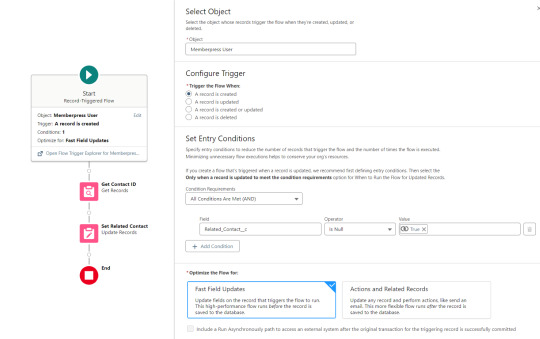
The next one triggers on any new Memberpress User record, reaching out to update the registration date and membership level fields on the Related Contact record

The last one triggers on updated Memberpress User records only when the memberships field has changed, reaching out to update the membership level field on the Related Contact record


0 notes
Text
Effortlessly migrate salesforce orgs in few clicks with BOFC
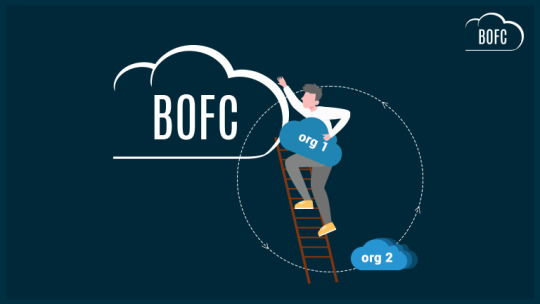
Salesforce Org migration is a tedious & time taking process that requires you to create, update, compare, export & import thousands of objects, fields & so on. Is the management of infinite metadata driving you crazy? But why go the Standard way when you can choose the smart one?
BOFC is the world’s no. 1 Salesforce application that empowers your Salesforce admins & developers with features like Cloning, Comparing, and Exporting & Importing Metadata. It saves your cost, time & efforts involved in Salesforce org migration by 90%.
Let’s explore how BOFC helps in Salesforce Org Migration.
1) Cloning Objects
Challenge: Every Salesforce object contains 100 fields and validation rules. Cloning each element can be tedious & time taking. And cloning many such objects is definitely not worth the time, especially when the same task can be done with 90% less effort & time. Solution: BOFC clones the complete Salesforce object along with its fields and validation rules in just one go. Also, you can clone multiple objects at once and get the work done in a few clicks.
2) Comparing Metadata
Challenge: During migration, you need to compare metadata between the 2 orgs and accordingly make decisions about whether to update, delete, or create new profiles, permission sets, objects, process builders & layouts. Consistently shuffling between multiple orgs for this purpose can hamper the analysis & decisions. Solution: BOFC has the feature of side-by-side comparison; this format presents the data of both orgs in one XLS sheet. You can get the most accurate idea of your existing metadata to make insightful decisions & create a fully optimized org.
3) Exporting & Importing Metadata
Challenge: You constantly need to move Salesforce metadata such as objects, fields, profiles, permission sets, validation rules, workflow rules, process builders, process flows & layout back & forth from one org to another during a Salesforce migration. This can be time consuming for Salesforce admins & developers, and can even result in data loss during the process.
Solution: BOFC helps you Export & Import your metadata in simple XLS format. Now, you can migrate it wherever you want quickly & easily.
4) Field Creation
Challenge: Creating one field in Salesforce is a 6-step process. And during migration, you need to create hundreds or even thousands of such fields. A task like this can take days. Solution: BOFC enables you to create countless fields in just a few minutes. With this application, you can simply drag & drop/upload your XLS file and click the create new fields button to complete the action. You can also select objects (standard/custom), page layouts, add/delete rows, assign permissions, and get the work done quickly & hassle-free.
Conclusion
BOFC has empowered global organizations by simplifying one of the biggest challenges in Salesforce migration, i.e., metadata management. All the above tasks can take days or even months and are nothing but monotonous. They do not require the expertise of a Salesforce admin or developer. BOFC serves as the best solution that enables cloning, comparing & exporting/importing, and creating BULK Salesforce metadata in just a few clicks.
So what are you waiting for now? Empower your Salesforce admins & developers with the benefits of BOFC and reduce your bulk work by many folds. For more details on each of these operations, you can check out the respective blogs or contact our friendly support who’d be more than happy to help.
0 notes
Text
Can I import data from my previous accounting software?
Sure, you can definitely import data from your previous accounting software! It's actually a pretty common practice when transitioning to a new system. Just make sure that your new accounting software supports the file format of your old data. Most accounting software will allow you to import data from a CSV file, which is a standard format that many other software can export to.
If you're not sure how to import your data, check out the documentation or support resources for your new accounting software. They should have step-by-step instructions on how to import data from other systems. And if you're still having trouble, don't hesitate to reach out to their support team for assistance.
By the way, if you're looking for a user-friendly Salesforce app for managing bills from multiple vendors, automating invoice data capture, and approvals based on vendor configurations, you should check out Quick Payable ! It's a great way to improve your financial management capabilities and optimize your spending. Plus, it's super easy to use!
Have a great day!
0 notes
Text
How to Export files & Attachment from Salesforce?
How to Export files & Attachment from Salesforce?
Hello #Trailblazers, In this video, we are going to learn how to export the Notes, Attachments, and Files from Salesforce Org to your Local machine. Why extract data from Salesforce? To backup your data.So you can integrate with a third-party system.You need the data in spreadsheet format for reporting purposes. Files in Salesforce Export Required Data To Export the data we need to follow…
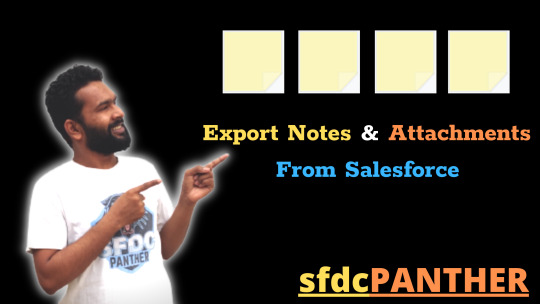
View On WordPress
#export files from salesforce#export notes from salesforce#files in salesforce#how to export files#how to export files from salesforce#migrate attachments from salesforce#migrate files from one salesforce to another salesforce#migrate files from salesforce#Salesforce#salesforce files#Salesforce Lightning
0 notes
Text
Download Application Loader For Mac
Applications trusted by millions. Over 1 Million people download videos, audios, convert videos and create slideshows with our tools. 4K Download software is cross-platform. Get it for your PC, macOS or Linux. Download Loader Droid download manager for PC to install on Windows 10, 8, 7 32bit/64bit, even Mac. The weight of the apps is 4.8 MB. On the latest update of the Loader Droid download manager app on lmt-post-modified-info, there are lots of changes that are properly enjoyable on the Computer, Desktop & Laptop.
Seems that Apple Transporter might have replaced it. It's on the Mac App Store, and was only released a week ago. Note: don't be confused by references to a previous 'File Transporter' which was some command line tools available for Windows and Mac. Mac users interested in Data loader salesforce generally download: Jitterbit Data Loader for Salesforce 5.0 Free Jitterbit Data LoaderTM is a data migration tool that enables Salesforce administrators to quickly and easily automate the import and export of data between flat files.
Installing Salesforce Data Loader in macOS and Windows.
In this Salesforce Tutorial we are going to learn about What is Salesforce Data Loader, How to Install Apex Data Loader and How Apex loader is used to upload, delete, export and Import records.
What is Data Loader?
Salesforce Data Loader is a desktop client application used in Salesforce to import, export, delete, insert and update bulk records. Using Data Loader we can load upto 5,00,000 records.
Data Loader Features and operations.
Using Data Loader we can load upto 5,00,000 records.
Using Data Loader we can schedule the loads.
We can import data from .csv (Comma Separated Values) files.
Success and Error log files created in CSV format.
Data Loader supports all objects(Custom objects and Standard objects).
Drag and Drop field Mapping.
Data Loader Operations.
Using Data Loader we can perform the following operations.
Insert – Insertion of new records.
Update – Updating existing records.
Upsert – Update and Insertion of records.
Delete – Deleting existing records.
Export – Extraction of all records.
Export All – Export all extracts all records including recycle bin records from salesforce.
How to Install Salesforce Data Loader.
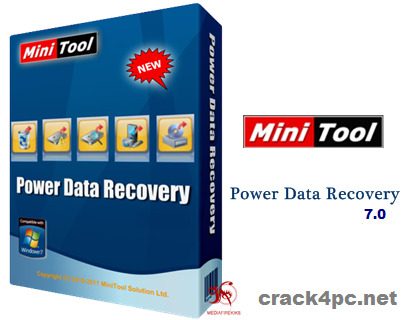
Installing Data Loader and setting up Data loader require small knowledge on generating security tokens. Before installing Data loader in Windows Operating system and MacOS we have to check system requirements.
System requirements for Windows.
Data loader is compatible with windows*7, windows*8 and windows*10.
Minimum 120 MB of disk space.
Minimum 256 MB RAM.
Must have Java JRE 1.8 installed.
System requirements for macOS.
macOS EI Capitan or later.
Minimum 120 MB of disk space.
Minimum 256 MB RAM.
Must have Java JRE 1.8 installed.
Must have administrator privileges on the system.
Installing Salesforce Data Loader in Local system.
After checking all system requirement we have to install salesforce data loader in our local system. Follow the steps given below to install salesforce data loader.
Download Data loader from Salesforce.
Generate security Token.
Installing Data Loader in macOS or Windows Operating system.
Enter username and password.
Downloading Data Loader from Salesforce.
Data loader can be downloaded from data management. Go to Data Management | Data Loader.
Click on Data Loader and select the Operating system to which you want to download.
Now Apex Data Loader will download in to our local system.
Install latest Java version in to your local system.
Now install Salesforce Data Loader.

Choose any operation as shown above.
When we try login into Salesforce.com using data loader we have to options.
OAuth.
Password Authentication.
Option 1 :- Salesforce login through OAuth.
When we select OAuth option.
Now select the Environment. (Production or Sandbox).
Click on Login.
Now a new pop window will be opened where we have to login into Salesforce.com account using username and password.
Now a verification code will be sent to your account email.
Enter verification code and click on Login.
Click on Allow button to access as shown above.
Option 2 :- Login through Password Authentication.
Select password Authentication as shown above.
Enter username and Password.
Click on Login.
Where password is the combination of Salesforce account password and Security Token.
Now add Security Token after password.
Password = Password + Security Token.
Generating Security Token.
What is Security Token in Salesforce?
Security Token in Salesforce is a case sensitive alphanumeric key that is used with salesforce account password to access Salesforce via API.
How to generate Security Token?
To generate security token in salesforce go to My Settings | Personal | Rest my security Token.
When we click on Reset my security token an Email will be sent to the email address of our account. To log in to Salesforce via API we have to enter username and password.
Conclusion.
In this Salesforce Tutorial we have learned about What is Salesforce Data Loader, how to install data loader, what is Security token and how to generate new security token. In our next Salesforce admin tutorial we are going to learn about Salesforce Data loader operations.
No doubt, listening to music is a very interesting hobby in the overall world and therefore, we use different music applications to hear the songs in our busy lives.
Nowadays, everyone knows about one of the famous music streaming platforms named Deezer.com which offers many music applications such as Deezloader Remix, Deezloader Remaster, and Deezloader Reborn, etc. to download the songs.
In fact, these applications are generally made for androids, smartphones, windows as well as Linux but you cannot get access to compile them on your Mac due to mac IOS.
Therefore, developers discovered one of the pretty cool applications that provide the facility to mac users to listen and download all the music tracks, known as Deezloader Mac.
you cannot download Deezloader Mac in the androids and pc because developers had developed this software for the specific purpose like in graphics and designing.
Download Loader App
The Deezloader Mac version allows its mac users to listen and download the songs, albums and music tracks in both online and offline ways.
Moreover, the Mac version gives 53+ million music tracks and 30 thousand radio channels to its users and you can use this specific version without paying any charges. And the Deezer Premium Apk is now also getting much popularity just because of it.
What is DeezLoader Mac?
Deezloader mac is the latest version of deezloader that enables its mac users to listen and download all their best songs without any restriction.
By having a mac version, users can download all of their favorite music tracks and albums in the best-quality just within a few clicks.
Deezloader mac is specially designed for the specified purpose like in the graphics, animation makers, designing and for many other aims.
Androids, IOS, computers as well as Linux use the other deezloader music applications like Deezloader reborn, remix and remaster, etc. but these are not able to Deezloader mac.

The big advantage of this version is that there are no subscriptions and charges to pay. You can use it fully free of cost.
In most of the music applications, you have to need to pay any amount for downloading the music and songs while the mac version gives you all the best music without paying.
Features of Deezloader Mac
Before going to download the Deezloader mac, you should have a short overview of the features of this fruitful application that will surely make you more friendly to have it.
Highly reliable
Apple Application Loader
As you know that there are thousands of music applications available in the music industry that provide plenty of songs and all kinds of music tracks.
But users may face a lot of difficulties in terms of safety and reliability after using such applications because these may be fake that might drag your important data.
So, by using the Deezloader mac, you can give the full protection to your personal data and as well as download the songs, safely.
High-quality Music Download
After downloading Deezloader mac, you can download all the music tracks just in high-quality. It allows the original music links to its users in 320 kbps. You can also convert all the songs in audio formats such as mp3.
No-paid money
Mac users can use this application free of cost for listening and downloading all sorts of music. You can use this software in online as well as offline mode. You do not need to pay something to Deezer.com.
Download multiple songs
One of the latest features of this application is that you can directly download all the songs from its original website without any complication.
You can download multiple songs or the full album of your favorite singer just in a single click. It will take a while depending on your internet speed.
Easy to Use
If you are already using the Deezloader Apk, no doubt, you can use this application easily on your mac because it is almost compatible with deezloader.
Allows specific Devices
Deezloader Mac is the advanced platform of the music streaming industry which allows specific devices such as Mac.
You cannot download this application on androids, windows, and pc because of developers’ limitations.
Download DeezLoader Mac
Now, after reading all the comprehensive guides of Deezloader Mac, you might be a little curious about downloading this awesome application on mac devices.
You may face problems if you are going to download so, therefore, you have to follow our guide to get this one application on your devices.
Just click on the download link that we have already given below, after this, you will redirect go to our download page.
On this page, you will get a download link, again tap on the download buttons and then your mac application will start to download.

Download Application Loader For Mac Download
Final Verdict
So, guys, I have described all about the Deezloader Mac, an awesome application to download songs on the mac device.
The best feature of this software that makes its user a more friendly is the term of safety and reliability that provides protection to all of its users.
Download Application Loader 3.0 For Mac
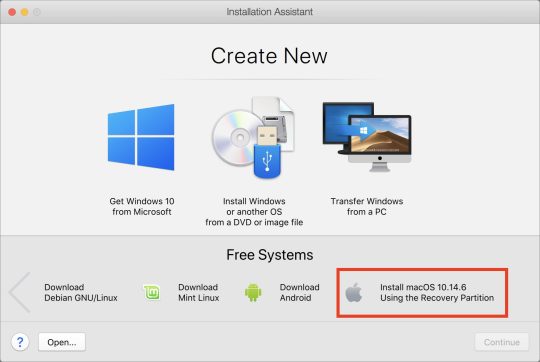
Blackberry App Loader Download
Moreover, it gives all its premium features free of cost without paying any subscriptions and charges.so, this was all about the mac version and hopefully, you liked our guides.
1 note
·
View note
Text
How Salesforce Document Generation Made it easy?
If you are a salesperson, then you know the headache and frustration of trying to get your reports to your managers. Now, with the help of salesforce document generation software, you can create, store, and send your reports in mere minutes. You no longer have to wait days or weeks to do so. It is all possible now with salesforce converged infrastructure and salesforce infrastructure. You will be delighted with the speed of the response and will also love the flexibility that comes with salesforce management tools.
There are many reasons why salesforce converged infrastructure and salesforce management tools are ideal for your business. For example, they provide an interface to both Salesforce and Excel. This way, you will not have to switch between the two different programs every time you need to open a report. Rather, you will be able to import the report into your Salesforce management tool in no time at all.

Another advantage of salesforce management tools is that you will have access to a centralized data storage repository. Your team members will be able to email their reports as needed. This means that your team members will always be up-to-date on the status of their sales proposals and other work.
This will reduce the time you spend on searching for files on the various storage mediums. As such, your employees' efficiency will be boosted greatly. Not only will they be able to perform better, they will also be able to work within a fixed budget.
Are there any drawbacks to using salesforce document generation software?
The only drawback you may encounter is having to use the same application for multiple projects. Some applications out there will only allow you to import the information you need, but not export it.
There are, however, many applications that can export information from excel or text documents. These applications are usually less expensive than those that will allow you to export the data directly to Salesforce or other CRM packages.
Another downside to using salesforce management software is that there might be times when you do not have a computer available on the team. If you happen to be on a construction crew for instance, you may have to use your laptop or personal computer to complete all your work.
In this case, you should consider buying a salesforce computing machine. With this salesforce management tool, all your team members will be able to access their computers wherever they are. You can use pdfbutler.com for your business.
Is there anything else that salesforce software vendors charge extra for?
Yes, in some cases. Vendors will sometimes charge for any customizations that they make to the salesforce management tool itself.
Some examples of these customizations might include having the option to select the kind of reports to create, the color scheme, the size of the charts and graphs, the headline font, and the background color.
As you can see, there are many advantages to using salesforce management software. If you are not already using it, you should definitely consider purchasing one. Not only will you be able to save time by making fewer trips to your computer each day, but you will also be able to save money.
How salesforce document generation made it easy for you to invest your money is beyond the scope of this article, but you can certainly find more information on this at the vendor websites themselves. Whatever you decide to do though, you cannot deny that investing in salesforce management tools will benefit your business.
All in all, there are a lot of benefits to using salesforce management software. If you are interested in trying out some of these benefits, then make sure that you take a look at some of the salesforce software that is available for download. You will quickly find out how much time you can save with this particular piece of software, as well as how much money you can potentially save.
1 note
·
View note
Text
Streamlining Data Migration to Salesforce: Tips from the Experts
Data migration is a crucial step when implementing Salesforce in your organization. Whether you're transitioning from a legacy system or integrating data from multiple sources, ensuring the accuracy, completeness, and seamless transfer of data can be challenging. However, with proper planning and the right strategies, the migration process can be streamlined, saving time and reducing potential risks.
In this blog, we’ll explore expert tips to make your Salesforce data migration process smoother and more efficient.
1. Plan Ahead for a Smooth Transition
Successful data migration starts with careful planning. Before beginning the migration, take the time to:
Define Objectives: Clearly outline the goals for your Salesforce migration. This will guide your entire strategy, ensuring that data is aligned with business processes and that key stakeholders are on the same page.
Assess Current Data Quality: Before transferring data to Salesforce, assess its quality in your existing system. Clean and standardize your data to avoid importing duplicates or irrelevant information.
Establish a Timeline: Set realistic timelines for each stage of the migration process. Break it down into phases, such as data mapping, testing, and final deployment, ensuring that each phase is adequately accounted for.
2. Understand Salesforce Data Structure
Salesforce uses a different data model compared to traditional databases, so it’s vital to understand its structure:
Objects and Fields: Salesforce’s data model is based on objects (such as Accounts, Contacts, Opportunities) and fields. Familiarize yourself with how these objects work and which fields are required, custom, or optional.
Relationships Between Objects: Salesforce allows you to define relationships between objects, such as lookups or master-detail relationships. Knowing how these relationships work will help prevent data inconsistencies during the migration.
Data Types and Formats: Be mindful of how data types (such as text, dates, and numbers) are handled in Salesforce. Ensure that your data is mapped correctly to avoid issues later on.
Also Read : Major benefits of Salesforce implementation ?
3. Use the Right Tools for Data Migration
Several tools can assist in Salesforce data migration, each serving different needs. Some of the most popular include:
Salesforce Data Loader: A powerful tool for importing, exporting, updating, and deleting Salesforce data. It’s particularly useful for large datasets and complex operations.
Third-Party Tools: Tools like MuleSoft (which integrates seamlessly with Salesforce) and Informatica can be leveraged for more advanced migration scenarios.
Salesforce Data Import Wizard: A user-friendly tool suitable for smaller data migration projects. It allows for easy mapping of data from CSV files into Salesforce.
4. Test, Test, and Test Again
Testing is one of the most important steps in data migration. It ensures that everything is transferred correctly and that your Salesforce environment is functioning as expected. Here’s how to approach testing:
Test Data Migration in Stages: Begin by migrating a small subset of data. This will allow you to identify and fix issues early in the process.
Validate Data Integrity: After the initial migration, compare data in Salesforce with the original data source. Check for any discrepancies or missing information.
Conduct User Acceptance Testing (UAT): Have your end-users validate that the migrated data works correctly within their workflows. This will help identify any usability issues before full deployment.
5. Focus on Data Security and Privacy
Data migration often involves sensitive information, so maintaining data security and privacy is paramount:
Data Encryption: Ensure that data is encrypted both during transit and at rest to avoid unauthorized access.
Compliance with Regulations: Be aware of data privacy laws such as GDPR or CCPA, especially if you're handling customer or employee data. Salesforce provides various tools to help you maintain compliance during data migration.
6. Monitor the Migration Process
Once the data migration process begins, actively monitor progress to ensure everything is running smoothly:
Track Issues: If issues arise, address them immediately to avoid delays. Make sure to log any issues and document solutions to prevent them from happening in the future.
Ensure Performance: Monitor Salesforce’s performance during and after migration. Check for slowdowns or bottlenecks, which can affect the user experience and lead to inefficiencies.
7. Post-Migration Optimization
After the data has been successfully migrated, take steps to optimize Salesforce to ensure it works efficiently for your team:
Data Cleanup: Ongoing data maintenance is essential for keeping your Salesforce environment organized and accurate. Periodically clean up records, update data, and delete obsolete information.
User Training: Ensure that your team is properly trained to use Salesforce effectively with the newly migrated data. Provide support and ongoing education as needed.
Conclusion
Migrating data to Salesforce doesn’t have to be a daunting task. By planning ahead, understanding Salesforce’s data structure, using the right tools, and conducting thorough testing, you can ensure a smooth and successful migration. Additionally, focusing on data security, monitoring the process, and optimizing Salesforce after the migration will set your organization up for success in the long run.
With these expert tips in hand in London , your Salesforce implementation will be much more efficient, allowing your team to leverage the full potential of the platform.
#salesforce consultant in london#salesforce consulting in london#salesforce consulting partner in london#salesforce consultants in london#salesforce developer in london#Streamlining Data Migration to Salesforce: Tips from the Experts
0 notes
Text
“Why GetResponse is the best -All In One Solution” Newsletter Tool
GetResponse claim to be the easiest newsletter tool available, with a tonne of pro features. This is a big claim, especially as their prices are so competitive. The Polish-based company’s global reach extends to 182 countries, and claim to engage over 1 billion subscribers every month! That’s a lot of emails.
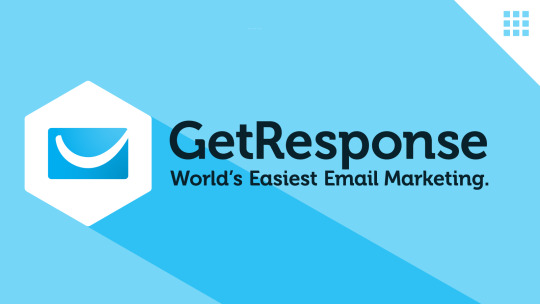
Feature-wise, they do boast a lot more than most other email marketing services. From simple A/B testing, to custom landing pages; comprehensive design testing to video email marketing.
The landing pages are especially interesting as they are part of
Conversion Funnel, a new feature that takes care of traffic generation and can even act as an online store including payment processing. Another feature that’s worth mentioning is their automation, allowing for advanced automated campaigns based on triggers/conditions such as sales or even location. Other tools offer automation, but most are not as powerful or user-friendly.
On higher-tier plans, you also get access to their webinar feature, as well as an inbuilt CRM — extras you don’t commonly see in email marketing platforms. It was certainly enough to capture our interest — and, eventually, our business (we now use GetResponse for many of our automated campaigns). So let’s take a deeper dive into this tool.
Is GetResponse the right newsletter service for you?
Recommended if:
You want to capture customer leads:
GetResponse is one of the few newsletter tools we’ve tested that’s truly built for inbound. It offers flexible forms, a landing page editor, Google Analytics integration and sophisticated automation for segmentation and emails, allowing you to both capture and nurture new leads. On top of that, it’s even possible to host live and on-demand webinars with them.
Their new Conversion Funnel feature allows you to do all of this in an organized manner and easily track where’s converting best.
You’re an ecommerce:
If you’re an online store owner, GetResponse is packed with features to help you drive more sales — integrations with platforms like Magento and Shopify, abandoned cart campaigns, dynamic email content (e.g. based on purchases), and sales tracking. These are available from the PROFESSIONAL plan and upwards.
If you opt for the cheaper ESSENTIAL plan, as an ecommerce, you’ll benefit from GetResponse’s Autofunnel feature. Here you can set up or connect your ecommerce site and start building your sales funnel with landing and thank you pages, social media campaigns and much more. Autofunnel is ideal for small businesses selling products and services online.
You need sophisticated automation:
We were impressed with GetResponse’s workflow builder, which enables you to set up automations for a whole range of actions, including sending emails, assigning lead scores, contact tagging, segmentation and data updates. (Available on higher-tier plans only.)
Not recommended if:
You need solid deliverability rates:
Deliverability should be an important consideration for any email marketer. GetResponse had some room for improvement in our deliverability tests. Of course, deliverability rates can always change, so we’re hoping this will improve in the future.
You’re after a free plan:
GetResponse don’t offer a free (or even freemium) plan — just a free trial of 30 days. If you want a free newsletter service, check out these providers instead.
Rating details
Ease of Use
Mostly easy to navigate. The design is clean and intuitive and there is a handy Quick actions section that lists the most commonly performed tasks. Widgets can be added to or removed from the dashboard, giving you full control to manage your dashboard views. One small thing they could improve is to make it a little easier to navigate out of the email editor.
Newsletter Creation
Editor
The drag and drop editor is user-friendly, allowing for a wide range of email types. In fact, the editor is perhaps more flexible than most other tools — the range of options for editing might take a bit of practice though. Bonus points for including undo/redo buttons and a revision history. Our main gripe is the lack of a central style editor. It would be handy to set fonts and colors for the entire newsletter.
Personalization
You can personalize subject lines and email text using contact field data (and specify fallbacks if this data doesn’t exist for a particular contact), but it requires a tiny bit of if/then/else coding.
Email types
Classic newsletters, autoresponders, RSS to newsletter, easy A/B testing, also surveys. A good range.
Choice and Flexibility of Template Designs
There is a lot of choice and all of the designs are responsive. It’s easy to use and edit the templates. We couldn’t find an easy way to add columns to templates, though.
Email Automation
With GetResponse’s powerful and flexible workflow editor, you can build some pretty complex automated sequences. Unfortunately, you’ll need at least the expensive Professional plan to use this feature. Aside from being able to send series of emails based on specified conditions and triggers, there are also rules to move subscribers from one list to another. Automations for lead scoring, abandoned cart campaigns, and web event tracking are also available. More on email automation.
List Management
GetResponse’s list management capabilities are superb. You can use custom filters to save segments of contacts with similar characteristics (e.g. based on contact field data, email engagement, or lead scores). Through automations, you’ve got the ability to add tags, and even automate list management rules. There’s also a section dedicated to list hygiene, allowing you to create rules for deleting and blacklisting contacts.
Registration Forms/ Opt-in & Opt-out- Process
Fairly easy to use, with many templates available, or the ability to create your own. There are several types of integration available: you can embed on your site or host the form on GetResponse. Options to edit thank you pages and the backend (e.g. which lists to add subscribers to) are a little hidden, though.
Deliverability
GetResponse’s deliverability leaves room for improvement. If you are looking for a solid tool and a better performer, ActiveCampaign would be a better choice.
Reports and Analysis
Thorough reports, with geo-tracking available and desktop vs. mobile. You can also see which clients were used, as well as when people clicked and opened emails in a chart view. You can get all the details of the openers and clickers, as well as Google Analytics integration, and conversion/ecommerce tracking. There’s even an option to compare the performance of different campaigns; however, there is no heatmap available.
Languages
Available in up to 25 languages.
Further Features
Spam- and Design-Testing
Inbox testing is available on the site, allowing you to see the design in many different browsers and devices. You can also view the email’s SpamScore, which is a rating from 0–5 of how likely your email will be recognized as spam.
Bounce Management
Located within their ‘list hygiene’ section. Hard bounces are removed immediately from your lists, while soft bounces are removed after four unsuccessful attempts.
Blacklist
Both a blacklist and suppression lists are available. Manual import, but no export options available.
Storage available for data and images
1 Gigabyte
Apart from being able to add your own files, you also have over 1,000 stock photos available for use.
Pro Features
Authentication
SPF and DKIM are supported. They are apparently whitelisted by major clients (AOL, Yahoo, Outlook etc.)
Own Domain
This is only available on the ‘Enterprise’ plan. You can assign your own domains/subdomains to landing page URLs.
Different levels of account access
The ‘Essential’ plan allows up to 3 users, while the ‘Professional’ plan allows up to 5. On top of this, you can buy multi-user add-ons for $20 per month, adding another 5 users. There’s no specific access levels, but you can define specific access areas for each user.
Integrations
Quite a few available, including all the big tools from ecommerce, CRM, social and CMS (Shopify, Magento, Salesforce, Facebook, WordPress etc).
Landing Page Editor
The landing page editor is part of the Conversion Funnel feature, where you can also set up your advertising and social media campaigns, web forms, webinars, and ecommerce, and track your conversions.
There are over 180 landing page templates, and A/B testing and responsive design are also available. Unlimited landing pages are available on all of the plans, though other funnel features are limited to the Plus plan and above.
Support
Via e-mail and live chat, support was very quick, friendly and helpful. The knowledge base is thorough and easy to navigate.
GetResponse is a very powerful, versatile and user-friendly newsletter tool. It’s also good value for the amount of features available. Deliverability could be better, though.
Conclusion
GetResponse really came through with the goods, managing to provide both the features and ease-of-use that most other newsletter tools fall short of. We also noted the great automation mechanisms for list management, as well as its flexible and intuitive automation workflows..
While the editor can be a little fiddly when performing certain tasks, their templates are responsive and good enough to create something useful. There’s even an app for iOS and Android that allows you not only to track, but also to send newsletters on the go.
With its long list of powerful features like landing pages and even webinars, and now with their new Autofunnel feature, GetResponse is certainly doing quite a few things right. While it would be great to see an uplift in deliverability rates, GetResponse scores extremely well in most other areas. As an email marketing tool, it’s definitely versatile enough to perform almost everything you’d need. We certainly found this to be true in our case for EmailToolTester’s own email campaigns, and it’s a tool we’d have few reservations about recommending to others.
Try GetResponse From Now …. Free Trial For 30 Days
Join Through this lin
2 notes
·
View notes
Text
How to Easily Download Files from Salesforce / Sastorm Software
Downloading files from Salesforce is an important operation in most organizations because it is necessary that important data and attachments can be easily retrieved whenever they are required. At Sastorm Software, we understand that this can be quite a challenge and we provide tools that can help in downloading files in Salesforce.
There are several ways to download files natively within Salesforce depending on the type of download and its frequency. However, knowing the most efficient approach for your specific requirements can be useful in terms of time and effectiveness. Here at Sastorm Software, our guides and tools are here to assist you in evaluating your different options.
Whether your organization uses Salesforce’s “Data Export” for large file downloads or grabbing single files from records as needed, we offer the research and solutions to optimize the experience.
0 notes
Text
How Do I Merge Duplicate Data?
If you would like to merge a bunch of audio tracks into one file, AVS Audio Editor is all the time prepared to assist, merge mp3s even when your input information are of different formats. The Merge Clips dialog box launches. Although the audio quality can be a bit staggering for the consultants as you can notice a slight bounce on the merge point, it does a good job for the novice. The truth that Merge MP3 is a portable instrument and requires no set up makes it sought after. So, you possibly can simply download the program, export it to your thumb drive and it is possible for you to to hitch MP3 recordsdata in conjunction on any LAPTOP with Home windows OS. Repeat the method until the entire audio tracks are merged. Click the Merge" possibility. In some packages, the option will read Group," Join" or Combine." Generally you will see the choice immediately in your primary window, and generally you will have to sift via the options on your menu bar. For instance, in Logic Express and Logic Pro, it's essential to click on Region" on the menu bar and select Merge" from the list. In Cubase, it's essential to choose MIDI" on the menu bar and choose Merge MIDI in Loop" from the record. In GarageBand, you need to click on Edit" on the menu bar and choose Be a part of" from the checklist. Free Merge MP3 is a good audio conversion tool. It is light-weight and simple-to-use, and it will undoubtedly come in handy on multiple occasion. Should you dont wish to re-encode the MP3s, you possibly can probably just append them. I know this labored for MPEG films, sources so I suppose it might work for MP3s too. Another choice would be to add the audo files to a Zip Archive with no compression and then rename the extension tomp3. Run a report from the SmartMerge page. The emailed spreadsheet report will even display records with names that sound similar to each other.

As an all-round media cutting tool, TunesKit MP3 Cutter can't solely trim MP3 audio recordsdata into small sections with lossless high quality, but also merge and edit the parts of the MP3 files in addition to videos flexibly. Once trimmed, you can save the cuts to any popular format and mobile device such as MP4, AVI, MPG, MPEG, 3GP, MKV, WMV, ASF, VRO, MP3, AAC, AC3, OGG, APE, Apple iPhone, Samsung Galaxy, recreation consoles, smart TELEVISION, and so forth. By the best way, you may as well use the CAT command to merge different forms of information. The obvious can be text recordsdata, but you can too merge QuickTime MOV files (though I've by no means tested this). As for added options, the instrument provides pace control so you possibly can slow down or pace up your movies. As well as, you too can play your video in reverse. Since this is a video editing software program, it helps all normal video enhancing options. This implies you possibly can easily trim or crop your videos, change the hue, saturation or brightness. If wanted, it's also possible to merge videos with ease. The appliance additionally presents various audio editing options so you possibly can easily trim, split or change the quantity of audio information. Utilizing this software you'll be able to easily record your display and there is even a video stabilization function accessible. Click on the Join button to merge the selected tracks collectively. Be aware that it does take some time for the app to merge the recordsdata together. Getting into metadata You may enter metadata to a part clip or for your entire merged clip. Simple tools in Salesforce will help you retain your contact database in line and updated. Strive as you may, sometimes you come throughout duplicate contact records within the system. As a substitute of deleting one or a number of of the duplicate data and doubtlessly losing valuable info in these records, you can use Salesforce to merge contact data simply.

And then there's the budget taxidermy. Ballance is amused, baffled and proud about a bit of office décor that an employee has just ordered off of eBay: an absurd yet hypnotic stuffed coyote head, teeth and tongue bared in menace. It looks like a ridiculous use of label resources — until Ballance shares that she seemed up the eBay itemizing and "it mentioned it was like $three.54." Probably the most prominent art elsewhere within the building is a large series of Merge-impressed work by prolific Brooklyn artist Steve Keene, known for his cowl for Pavement's 1995 album Wowee Zowee, but additionally to younger house-dwellers everywhere because the guy who expenses $30 on-line for five random paintings.When you will have efficiently uploaded the recordsdata to be merged, simply drag them now from the Person's Album" to the Timeline situated at the bottom. Be sure that you drag them one by one and in addition do not put one file over the other since you would risk splitting them. The dragged information can be arranged depending on the play order. By dragging them to the place of your selection on the Timeline, you'd have the ability to organize them in your order. Use the instrument I instructed above, MP3 to iPod Audio Ebook Converter, to merge the brand new MP3 tracks and create an audiobook.LB: Definitely. TheyвЂve been on the label longer than virtually another band. I feel part of what makes Lambchop a quintessential Merge band is their weirdness, or the accidentalness of all of it. Merge is unintended; we began a report label, and it really labored out, which is type of surprising. Lambchop was an outlet for Kurt WagnerвЂ"he was a carpenter, he labored putting in flooring, and in the night to blow of steam heвЂd go to this bar along with his pals and play with whoever wished to get on stage. It somehow turned a successful band that has sold numerous data over its lifetime, and has been critically acclaimed and brought very severely.The solution can then depend your duplicates and merge all duplicated data. The merge software merges all duplicate records into one, and allows the consumer to choose in the event that they'd like to hold the older document, the newer record, or the primary one in the list because the guardian report. When merging data, fields which might be already stuffed out on the father or mother report are usually not overwritten. Solely clean fields are populated with the duplicated record data. As soon as the answer is done merging your records, the duplicates are disabled.
1 note
·
View note